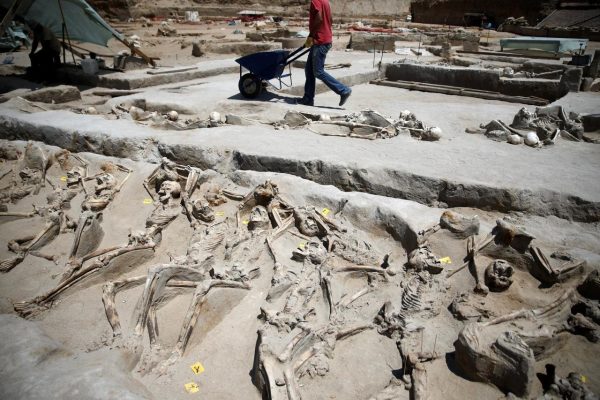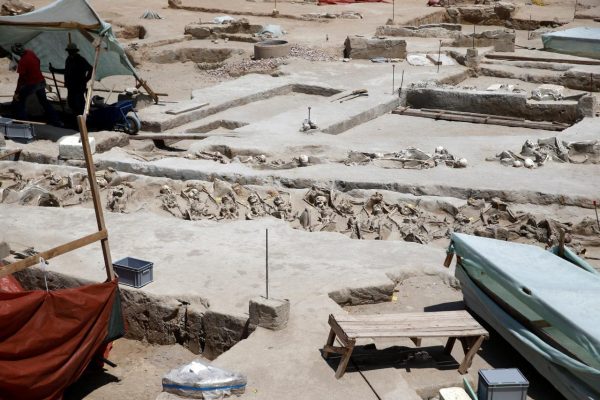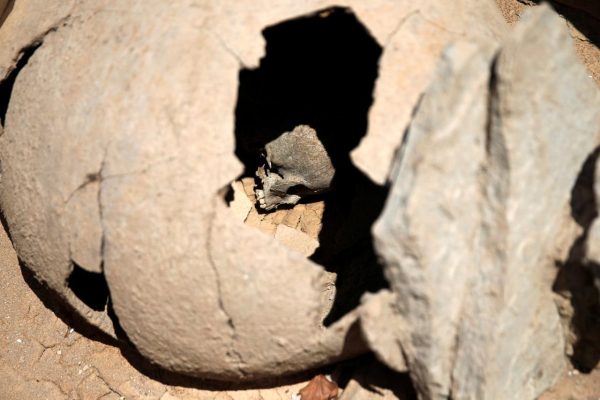Archaeologists have uncovered mysterious remains at the Falyron Delta in Athens. At least 80 skeletons were found buried in a mass grave in an ancient Greek cemetery, with their wrists clamped by iron shackles. Experts believe they were victims of a mass execution, but the identities of these individuals, how they came to be there, and why they were buried with a measure of respect remain a mystery.

Skeletal remains, with iron shackles on their wrists, are laid in a row at the ancient Falyron Delta cemetery in Athens. Credit: Reuters

During the construction of a national opera house and library between downtown Athens and the port of Piraeus, a worker discovered shackled skeletal remains at the ancient Falyron Delta cemetery. These remains were unearthed earlier this year in a part of the cemetery that has been dubbed the Falyron Delta necropolis.
Despite restrictions on entrance, archaeologists successfully led a tour of the site to Reuters. The tour showcased the skeletons, some of which were arranged in a long and neat row in the sandy ground. Others were piled on top of each other, with their arms and legs twisted and jaws hanging open.

According to Dr. Stella Chryssoulaki, head of excavations, the executed individuals were buried with respect, despite all being killed in the same manner. It appears that most of them were young and in good health before their execution, with their hands tied together by handcuffs.
The cause of death is still unknown, but experts plan to conduct DNA testing and further research to uncover the truth. The violent nature of the event is evident from the fact that most of the individuals had their arms bound above their heads with their wrists tied together.

Unlike Athens’ renowned ancient Kerameikos cemetery, the last resting place of many prominent ancient Greeks, these appear to be the inhabitants of a marginal neighborhood. The dig is within a 170,000 sq m landscaped park, shaded by the vast new Stavros Niarchos philanthropic foundation. High-rise apartments dot the skyline to the north, while a noisy motorway snakes by the site’s east side.

Chryssoulaki envisions a museum being built on the spot, as a monument to the daily lives of Athenians from another era. “A cemetery is a first and last photograph in antiquity of those people that pass from life to death,” she said.

In summary, the discovery of shackled skeletal remains at the ancient Falyron Delta cemetery in Athens poses intriguing questions about the past and sheds light on the lives of those who once inhabited this ancient city. As archaeologists continue their investigations, the mystery surrounding these individuals and their untimely end may slowly unravel, offering insights into a bygone era.





